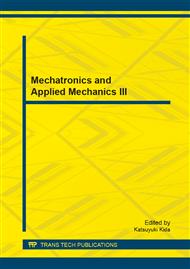p.418
p.422
p.427
p.435
p.439
p.443
p.447
p.452
p.457
Heat Transfer Analysis of Exhaust Manifold with Water Jacket of a High Speed Gasoline Based on FSI
Abstract:
The fluid-structure interaction (FSI) method is employed to analyze heat transfer of a exhaust manifold with a water jacket. Three different turbulence models are valued to predict their spheres of application. The mutual effect on complex flow distribution and heat transfer with and without transition is also considered respectively. The results show that reasonable turbulence model and transition will contribute to a better numerical precision of temperature distribution. Considering transition will have a impact on the design of novel exhaust manifold of high speed gasoline engine. In addition, numerical results can be referred to improve the structure.
Info:
Periodical:
Pages:
439-442
Citation:
Online since:
February 2014
Price:
Сopyright:
© 2014 Trans Tech Publications Ltd. All Rights Reserved
Share:
Citation:


